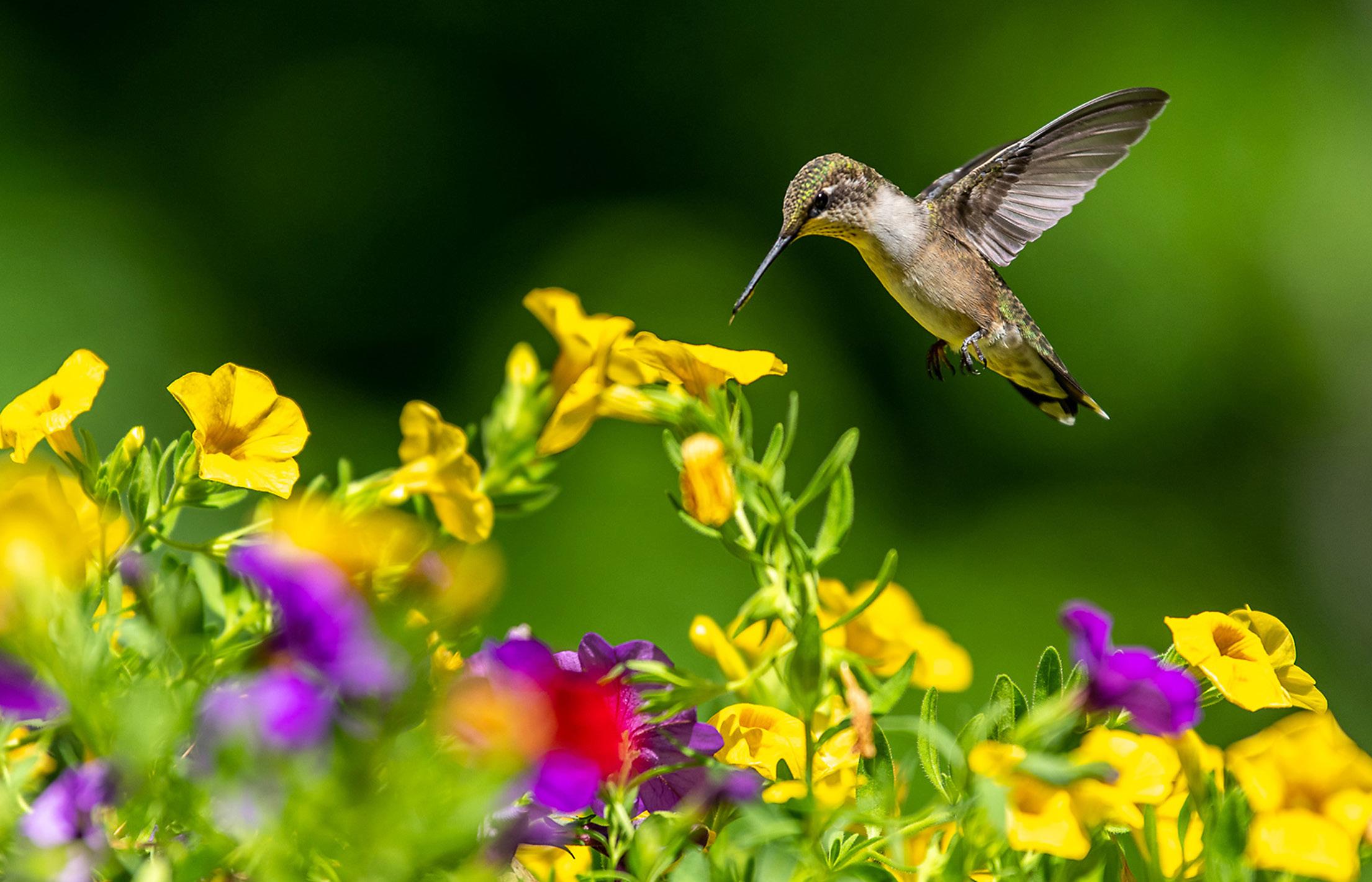TOP 10 THINGS YOU CAN DO TO ATTRACT MORE HUMMINGBIRDS
by Bill Thompson, III | Editor, Bird Watcher’s Digest
Photo by Tori Jackson
T
he ruby-throated hummingbird is the most common hummingbird in New England and in the Northeast. It is the only North American hummingbird that nests east of the Mississippi and weighs just an eighth of an ounce. Its heart beats 250 times per minute while its wings clock about 50 times per second. Male ruby-throated hummingbirds have a shiny green back and ruby red throat (that may look black in certain lighting). The female birds are slightly larger, and have green backs with a white breast and throat. Females also have rounded tails with white tips, while the males have a forked tail with no white.
Flower nectar is a major part of the hummingbird’s diet. While consuming nectar, a hummingbird also collects pollen from one flower and deposits it on the reproductive parts of the next flower, thus providing the plant with a means of reproducing. To sustain their supercharged metabolisms, hummingbirds must eat once every 10 to 15 minutes and visit between 1,000 and 2,000 flowers per day. If you would like to attract more hummingbirds to your yard, read the following information originally produced by our friends at Bird Watcher’s Digest. Happy birding! 1. ADD A NEW NATIVE PLANT SPECIES TO YOUR GARDEN You just can’t have too many good hummingbird plants in your garden or yard. Take an inventory of your existing offerings and consult a source of hummingbird plant information for ideas on what to add next. Good sources include plant charts in Enjoying Hummingbirds More, and Creating Your Backyard Bird Garden. Both titles are part of the BWD backyard booklet series, which can be ordered at www.redstartbirding.com/collections/booklets.
2. PLAN A CONTINUOUS BLOOMING SCHEDULE When you’re leafing through your garden catalogs or wandering the greenhouses of your favorite garden center planning your hummingbird garden, choose plant species that have different blooming periods. For example, choose a ready-to-bloom hanging basket of fuschia for early flowers, a fast-growing Salvia species for midsummer flowers, and a late-blooming trumpet
creeper that will be in flower in late summer and fall. Ask a local gardening expert for advice on blooming schedules and seasons for your area, soil type, and climate. Continuous blooming means hummingbirds will always have a reason to be in your yard, especially late in the season when flower production is down but hummingbird numbers are up, with all the recently fledged youngsters. 3. DEADHEAD YOUR FLOWERS TO ENHANCE BLOOMING This old gardeners’ trick is a clever one. By removing old blossoms (this process is known as “deadheading”) shortly after they have wilted and removing seed heads from blooming plants, you trick the plants into thinking that their work is not yet done. The plants respond by continuing to produce flowers and seedheads, in the end producing far more than they would have if they had not been deadheaded. Later in the season, you
28 MWVvibe.com








